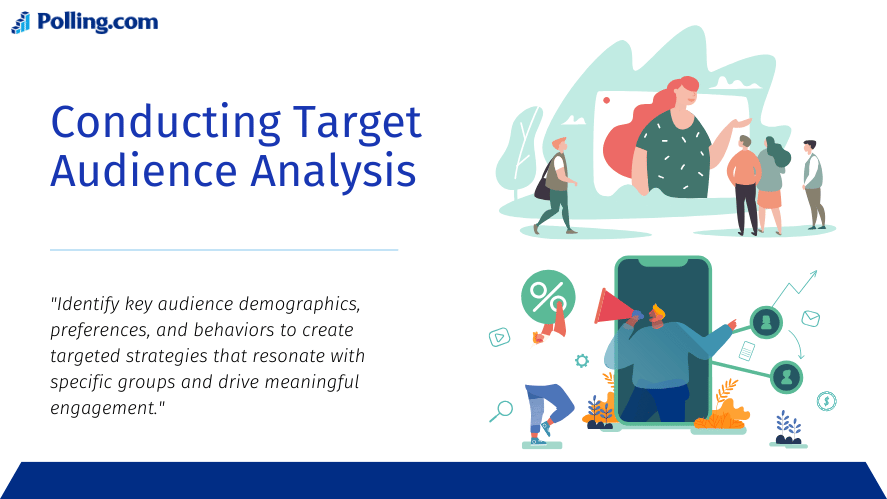
Market Segmentation and Target Audience Analysis For Surveying
What is market segmentation, and why does it matter? Imagine you’re trying to sell a product, but you need to know who would buy it. Market segmentation helps you divide the big market into smaller groups of people who are similar in some way. This is important because it helps businesses understand their customers better and make products they want.
Target Audience Analysis: This is about figuring out who your best customers are within those groups. It’s like zooming in on the people most likely to be interested in what you’re selling. Both market segmentation and target audience analysis are crucial for making good surveys. Surveys are like questions you ask people to learn what they think.
Understanding Market Segmentation

What is Market Segmentation?
Market segmentation is when businesses split their market into smaller groups. Each group has people with similar traits, like age or interests. This helps companies focus their efforts on the right people.
Types of Market Segmentation
- Demographic Segmentation: This type looks at characteristics like age, gender, income, and education. For example, a company might sell different toys to children of different age groups.
- Geographic Segmentation: This focuses on where people live. For example, a company might sell winter coats in cold areas and swimsuits in warm areas.
- Psychographic Segmentation: This looks at people’s lifestyles, values, and interests. For example, a brand might target eco-friendly products to people who care about the environment.
- Behavioral Segmentation: This examines how people behave, like what they buy or how often they use a product. For example, a coffee shop might target regular coffee drinkers with a loyalty program.
Benefits of Market Segmentation
- Targeted Marketing: Companies can create specific ads and products for each group, making customers feel understood.
- Better Customer Understanding: Knowing more about each group helps businesses meet their needs better.
- Improved Resource Allocation: Businesses can spend their money more wisely by focusing on the most interested groups.
Conducting Target Audience Analysis

What is Target Audience Analysis?
Target audience analysis means finding out who your best customers are. It helps businesses understand what these people want and how to reach them.
Steps in Target Audience Analysis
- Identifying Audience Characteristics: Collect data on things like age, hobbies, and spending habits.
- Creating Audience Personas: Make detailed profiles of typical customers, like what they like and dislike.
- Understanding Audience Needs and Preferences: Find out what the audience cares about and needs.
Tools and Techniques for Audience Analysis
- Surveys: Ask people directly what they think.
- Focus Groups: Talk to a small group of people to get more in-depth answers.
- Social Media Analytics: Look at what people are saying and sharing online.
- Web Analytics: See how people are using your website.
Applying Market Segmentation and Target Audience Analysis to Surveying

Designing Surveys with Segmentation in Mind
When creating surveys, think about the different groups you’ve identified. Ask questions that will give you helpful information from each group. For example, if you’re surveying teenagers and adults, you might ask different questions based on their age.
Customizing Survey Content for Target Audiences
Use language and topics that fit the group you’re surveying. For example, you might use more casual language for teenagers and more formal language for older adults.
Distribution Strategies Based on Segmentation
Choose the best way to reach each group. For instance, younger people might prefer taking surveys online, while older people might prefer phone surveys.
Analyzing Survey Data by Segments
After collecting survey data, look at the results from each group. This helps you understand what each group likes or dislikes, which can guide your next steps.
Case Studies and Examples
Successful Market Segmentation in Surveying
For example, a clothing brand wanted to know what styles were popular in different regions. By surveying people in various areas, they learned which clothes to promote where, leading to better sales.
Effective Target Audience Analysis
A video game company analyzed their target audience and found out that their games were popular among teenagers who liked fast-paced action. They used this information to develop more games that matched these interests, resulting in increased sales.
Challenges and Best Practices

Common Challenges in Market Segmentation and Audience Analysis
- Too Much Data: Sometimes there’s so much information that it’s hard to know what’s important.
- Misidentifying Segments: It’s easy to group people incorrectly, leading to ineffective marketing.
- Privacy Concerns: Collecting information must be done carefully to respect people’s privacy.
Best Practices for Success
- Use Various Data Sources: Get information from different places to get a complete picture.
- Update Regularly: People’s interests change, so it’s important to keep your data current.
- Respect Privacy: Always handle customer information responsibly.
Conclusion
Recap of Key Points
Market segmentation and target audience analysis are essential for businesses. They help companies understand their customers better and create products and services that meet their needs. This is especially important when designing surveys to gather useful data.
Future Trends
As technology advances, new tools will help businesses do even better market segmentation and audience analysis, leading to more personalized marketing.
